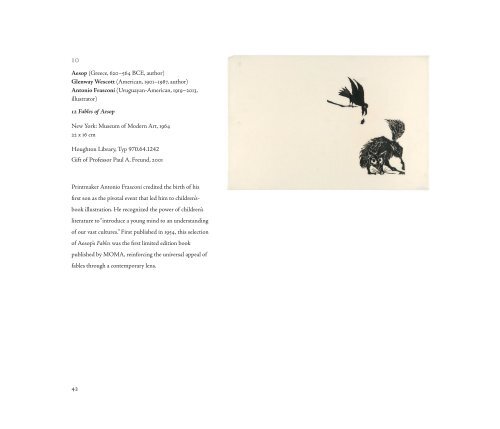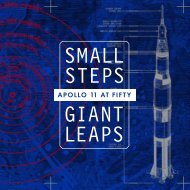Animals Are Us: Anthropomorphism in Children’s Literature; Celebrating the Peter J. Solomon Collection
Why do we tell stories to children through and about animals? Are there reasons why we shouldn’t? Animals Are Us invites explores these questions and more through influential historic examples of anthropomorphism in dialogue with contemporary books drawn from the collection of Peter J. Solomon (Harvard College Class of 1960, MBA 1963) and the holdings of Houghton Library. The exhibition invites you to engage critically with animal anthropomorphism, and delight in the artfulness of this enduring literary genre. Catalog of an exhibition on view at Houghton Library, Harvard University, September 1, 2021 - January 7, 2022.
Why do we tell stories to children through and about animals? Are there reasons why we shouldn’t? Animals Are Us invites explores these questions and more through influential historic examples of anthropomorphism in dialogue with contemporary books drawn from the collection of Peter J. Solomon (Harvard College Class of 1960, MBA 1963) and the holdings of Houghton Library. The exhibition invites you to engage critically with animal anthropomorphism, and delight in the artfulness of this enduring literary genre.
Catalog of an exhibition on view at Houghton Library, Harvard University, September 1, 2021 - January 7, 2022.
You also want an ePaper? Increase the reach of your titles
YUMPU automatically turns print PDFs into web optimized ePapers that Google loves.
10<br />
Aesop (Greece, 620–564 BCE, author)<br />
Glenway Wescott (American, 1901–1987, author)<br />
Antonio Frasconi (Uruguayan-American, 1919–2013,<br />
illustrator)<br />
12 Fables of Aesop<br />
New York: Museum of Modern Art, 1964<br />
22 x 16 cm<br />
Houghton Library, Typ 970.64.1242<br />
Gift of Professor Paul A. Freund, 2001<br />
Pr<strong>in</strong>tmaker Antonio Frasconi credited <strong>the</strong> birth of his<br />
first son as <strong>the</strong> pivotal event that led him to children’sbook<br />
illustration. He recognized <strong>the</strong> power of children’s<br />
literature to “<strong>in</strong>troduce a young m<strong>in</strong>d to an understand<strong>in</strong>g<br />
of our vast cultures.” First published <strong>in</strong> 1954, this selection<br />
of Aesop’s Fables was <strong>the</strong> first limited edition book<br />
published by MOMA, re<strong>in</strong>forc<strong>in</strong>g <strong>the</strong> universal appeal of<br />
fables through a contemporary lens.<br />
42



